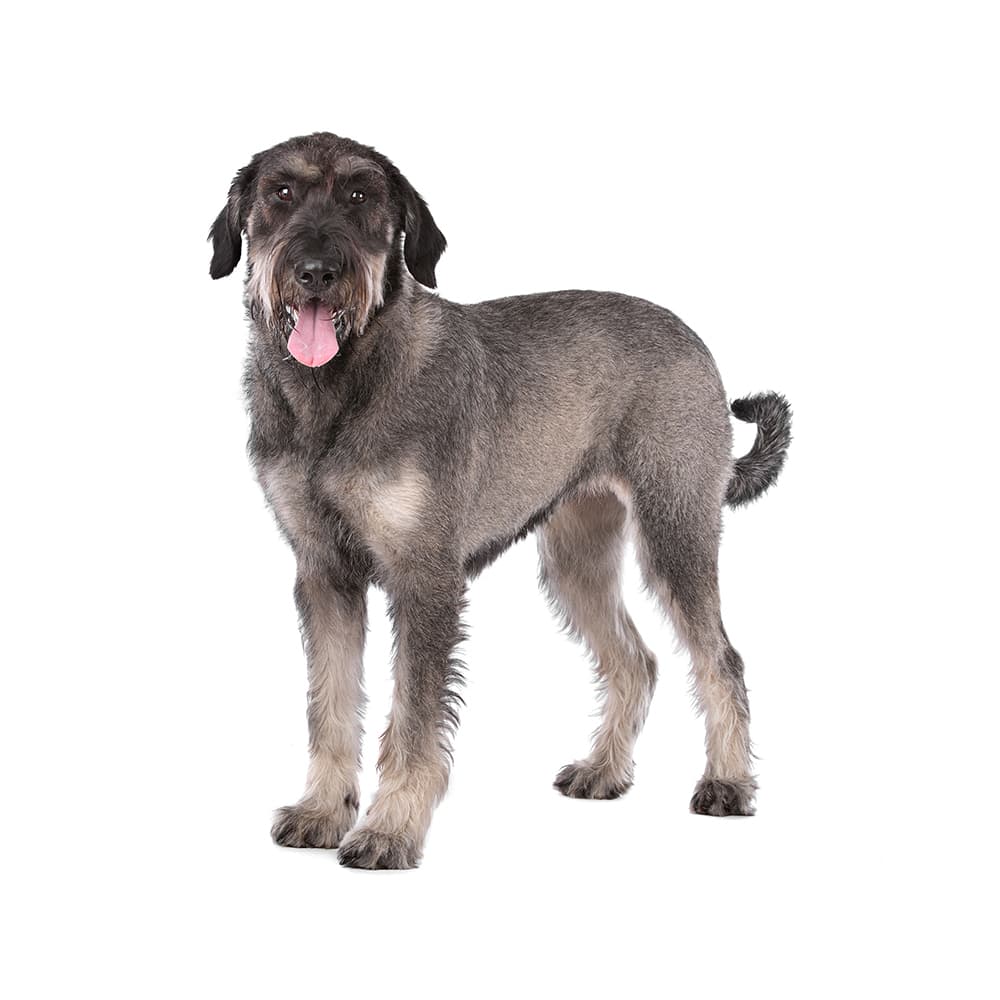Discover your dog's connection to this breed and 200+ others


Discover your dog's connection to this breed and 200+ others



The Giant Schnauzer, also known as Riesenschnauzer, originated in the 17th century in Germany's Bavaria region. Initially, they were bred for driving cattle and guarding breweries, butcher shops, and farms due to their strength and alert nature1. Their ancestors include the Standard Schnauzer and perhaps the black Great Dane and the Bouvier des Flandres. They were later employed in the police and military roles due to their trainability and protective instincts.
Giant Schnauzers can suffer from osteochondritis dissecans, hypothyroidism, gastric torsion, canine hip dysplasia, dilated cardiomyopathy, hyperuricosuria, progressive retinal atrophy, progressive rod-cone degeneration, coagulation factor VII deficiency, degenerative myelopathy, intestinal cobalamin malabsorption, and neuroaxonal dystrophy.
Giant Schnauzers are intelligent, versatile, and protective dogs. They are known for their intense loyalty and alertness, which makes them excellent guard dogs. They need lots of mental and physical stimulation due to their high energy levels and intelligence. They're generally good with children and can get along well with other animals if properly socialized.
A canine genetic lineage is a group of individuals or entire breeds that descended from common ancestors predating modern breed formation. Often these lineages are associated with a ‘type’ of dog with a unique historical working role and associated behaviors (e.g., herding, scent hunting, etc.).
Spitz and Sled Dogs originate in the Arctic and subarctic regions which caused them the develop adaptations to cold climates. Some of these adaptations give rise to characteristics of the lineage, most notably a dense double coat that helps with insulation. The lineage of these dogs can be followed back to ancient breeds developed by Indigenous people. These ancient breeds were used as an aid for transportation, herding, guarding, and hunting. These jobs have created dogs that are independent, intelligent and have strong work ethics as well as a sturdy body that helps them to pull sleds or go on long journeys over rough terrain.
Example breeds with ancestry from this lineage include Akita, Chow Chow, and Siberian Husky.
In World War I and II, Giant Schnauzers were employed as military dogs.
The name 'Schnauzer' originates from the German word 'Schnauze', which means 'muzzle' or 'snout'.
Despite their size, Giant Schnauzers are not considered a 'giant breed' like Great Danes or Mastiffs.
Recommended by top vets with decades of experience
21 breeds
64 genetic health markers
50 genetic trait markers
